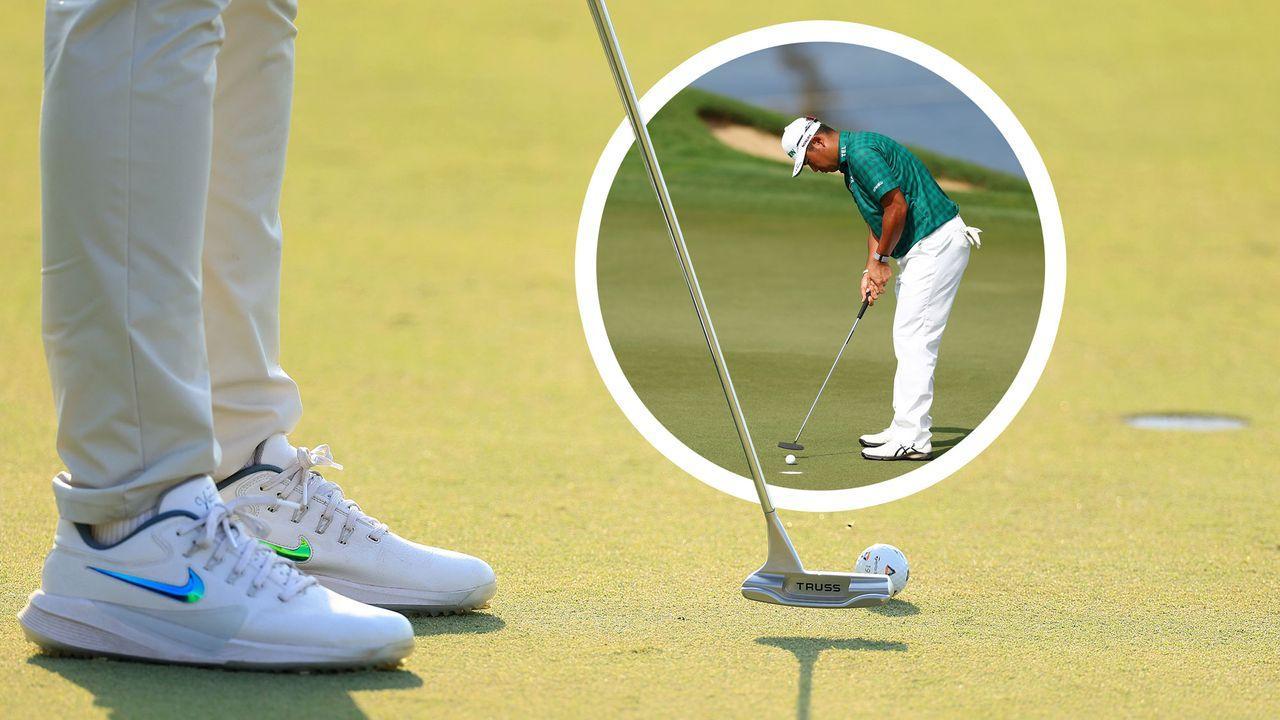Enhancing Golf Putting Performance: A Technical and Psychological Perspective
As daylight fades and the golfing day comes to a close, players often experience heightened pressure—not only from the impending end of their game but also due to various subtle challenges that can hinder their putting performance. Recent studies indicate a notable trend: as the day progresses, putt conversion rates tend to decline. This suggests that factors such as fatigue and reduced concentration considerably influence a golfer’s effectiveness on the green. Even skilled professionals may find straightforward putts increasingly challenging due to shifting light conditions and rising stress levels as they approach the final holes.
The Role of Mental Fatigue in Late-Round Putting Performance
The cumulative impact of mental fatigue can greatly diminish putting performance during the latter stages of a round. This issue often stems from the intense focus required in earlier holes; as players expend energy with each shot—especially on greens—mental exhaustion sets in, impairing decision-making capabilities. Research shows that even minor lapses in mental sharpness can lead golfers to second-guess their techniques or succumb to anxiety, both detrimental to putting precision.
A key aspect of understanding this decline is recognizing how emotional regulation plays into overall performance throughout a round. Players encounter various stressors—from environmental factors like weather changes to self-imposed expectations—that accumulate over time, increasing psychological strain which may manifest as hesitation or diminished confidence. To maintain clarity under pressure,golfers should develop consistent routines and utilize visualization techniques aimed at enhancing focus.
Additionally, it’s crucial for players to track their own performance trends related to fatigue accumulation. Analyzing statistics can reveal patterns indicating when success rates drop—such as after completing 12 holes—which could inform adjustments in both physical practice and mental preparation strategies.
Assessing Course conditions During Final Holes
the concluding holes present unique challenges influenced by varying course conditions that can significantly affect putting outcomes. As fatigue builds up and thoughts shift towards game results, slight lapses in concentration may result in missed opportunities on greens where conditions have changed throughout playtime.
Environmental elements such as humidity levels, wind speed, and temperature fluctuations are particularly relevant during late-afternoon rounds when these factors peak. As an example, drying greens might increase speed while foot traffic alters grain direction leading into inconsistencies unique at closing stages of playtime.
Acknowledging these dynamics allows golfers not only to adapt strategies accordingly but also enhances awareness regarding how course behavior impacts final putts—a critical component for maintaining composure under pressure during decisive moments.
Tactics for Sustaining Focus During Late-Round Putting
Navigating through those last few holes requires unwavering focus; however physical exhaustion combined with mental strain makes this increasingly difficult without specific strategies implemented beforehand.
One effective method is known as box breathing, which promotes relaxation while sharpening concentration skills through rhythmic inhalation (four seconds), breath-holding (four seconds), exhalation (four seconds), followed by another pause (four seconds).This technique helps alleviate anxiety before crucial late-round putts.
A pre-putt routine is equally essential for maintaining focus amidst distractions; establishing personal rituals—including visualizing intended lines or assessing green speeds—fosters familiarity leading ultimately toward improved consistency across all strokes made on greens throughout gameplay sessions!
The Power of Visualization Techniques
Visualization techniques, where players mentally rehearse successful putts before executing them physically reinforce positive mindsets while combating negative thoughts effectively! Keeping track via journals documenting reflections about key successful shots alongside emotions felt afterward strengthens overall confidence heading into high-stakes situations!
Tips from Experts for Managing Pressure Effectively
- Mental Rehearsal: Visualize your ball rolling smoothly towards its target hole with perfect alignment & pace!
- Breathe Deeply: Controlled deep breaths physiologically reduce tension restoring necessary focus needed during critical moments!
- Cultivate Mindfulness:</strong Stay present rather than dwelling upon past mistakes or future outcomes affecting current gameplay decisions negatively!
| Tactic | description |
|---|---|
| Visualization Techniques | Mentally rehearse successful shots boosting confidence levels! |
| Breathing Exercises | Utilize deep breaths combating stress enhancing overall clarity! |
| Mindfulness Practices | Remain engaged focusing solely upon current tasks without distractions! |
As twilight descends upon competitive golf days filled with insights derived from extensive analyses conducted within PGA Tour statistics reveal notable correlations between accumulated mental/physical fatigues impacting performances directly linked back onto respective courses played upon.
Understanding these dynamics proves invaluable not just aspiring athletes seeking betterment but also fans appreciating nuances involved within professional sportsmanship itself!
for further reading about refining your skills along similar lines check out our other articles dedicated towards overcoming challenges faced regularly!

Why Your Short Putts Get Tougher as the Round Progresses: the Surprising Science Behind It!
Meta Title: understanding why Short Putts Deteriorate Over a Round
Meta Description: Discover the science behind why short putts become more challenging as a round progresses. Learn practical tips to improve your putting consistency and reduce stress on the green.
The Psychological Factor: Pressure and Performance
As the round extends, players often experience increased pressure. Scientifically, this can lead to:
- Performance Anxiety: The fear of missing short putts can diminish confidence, altering the golfer’s approach.
- Narrowing Focus: Increased pressure can cause players to focus too much on mechanics, leading to overthinking.
Tips to Combat Performance Anxiety
- Breathing Techniques: Practise deep breathing before taking a putt to calm nerves.
- Visualization: Envision successful putts to build confidence.
The Physical Factor: Fatigue
Fatigue sets in both mentally and physically as the game progresses, which can affect putting performance in several ways:
- Muscle Fatigue: Arms and hands may tire, reducing the stability needed for short putts.
- Mental Fatigue: concentration wanes, leading to rushed or poorly executed strokes.
Strategies to Manage Fatigue
- Stay Hydrated: Drink water regularly to maintain energy levels.
- Mindfulness Breaks: Take short breaks between holes for mental resets.
Green Conditions Change
the state of the greens can evolve over a round due to factors such as:
- Foot Traffic: Increased wear can affect the smoothness, making putting feel less predictable.
- Wind and Weather Factors: Changes in wind speed and direction can impact the ball’s roll.
Maintaining Awareness of green Conditions
- Check the Conditions: Assess how the green is playing continuously.Look for signs of wear or change.
- Practice Reading Greens: Improve your green-reading skills for better performance.
The Importance of Consistent Practice
Practicing short putts specifically can improve performance. To enhance consistency:
- Drill Short Putts Daily: Spend 10-15 minutes focusing on putts within 5 feet.
- Vary Your Techniques: Practice with different grips and stances to find your best fit.
Example Drills for Short putts
| Drill Name | Description |
|——————-|———————————————-|
| Clock Drill | Place balls at 12, 3, 6, 9 o’clock and practice putts from each position. |
| One-Handed Drill | Practice putting with one hand to improve touch and feel. |
Analyzing the Cognitive Load
As a round progresses, golfers face increased cognitive load, which can affect performance:
- Decision Fatigue: Continually making strategic choices can wear down mental resources.
- Overthinking: Golfers may second-guess their instincts,leading to less fluid execution.
Combatting Cognitive Load
- Simplify Decisions: Stick to a straightforward strategy for your game and avoid over-analysis.
- Routine Development: Create a consistent pre-putt routine to ease decision-making.
Impact of Routine on Performance
Routines can have a profound effect on short putt performance by establishing a familiar process.This familiarity breeds comfort and reduces anxiety.
Establishing a Pre-Putt Routine
- Visualize the Line: Take a moment to visualize the ball’s path.
- Practice Strokes: Make a couple of practice strokes to feel the distance.
- Focus on Your Target: Concentrate on the hole or a specific point within it to enhance focus.
The Role of muscle Memory
Muscle memory is crucial in putting, and it requires consistent reinforcement. The more you practice, the more automatic your stroke becomes, counteracting the challenges faced during a round.
Enhancing Muscle Memory
- Repetition: Regularly practicing short putts reinforces the mechanics required for success.
- Video Analysis: Record your putts to identify areas for betterment.
Benefits of Understanding the Challenge
By acknowledging why short putts become tougher as the round progresses, golfers can better prepare for addressing these challenges and optimizing their performance.
Practical Benefits
- Improved Mental Resilience: Understanding these challenges can allow players to build mental toughness.
- Better Performance Consistency: Enhanced awareness equips golfers with tools to address putting issues head-on.
Case Study: The Pro Golfer Experience
Many professional golfers report similar patterns in their game adversely affecting short putts late in the round. For example, renowned players frequently enough emphasize the importance of routine and mental toughness.
Takeaway: Adopting their mental and physical strategies can definitely help amateur golfers improve short putt reliability.
Frist-Hand Experience
A common struggle among players relates to finding their rhythm later in play. Reflecting on experiences:
- “As I neared the 15th hole, I noticed my short putts felt increasingly difficult. I began developing a mindfulness routine that helped me focus better.”
By integrating relevant techniques and understanding the underlying factors, golfers can navigate the complexities of short putting as rounds progress while enhancing overall performance on the green.
This structured approach to understanding why short putts become more challenging offers golfers the opportunity to enhance their skills and optimize their practice.





